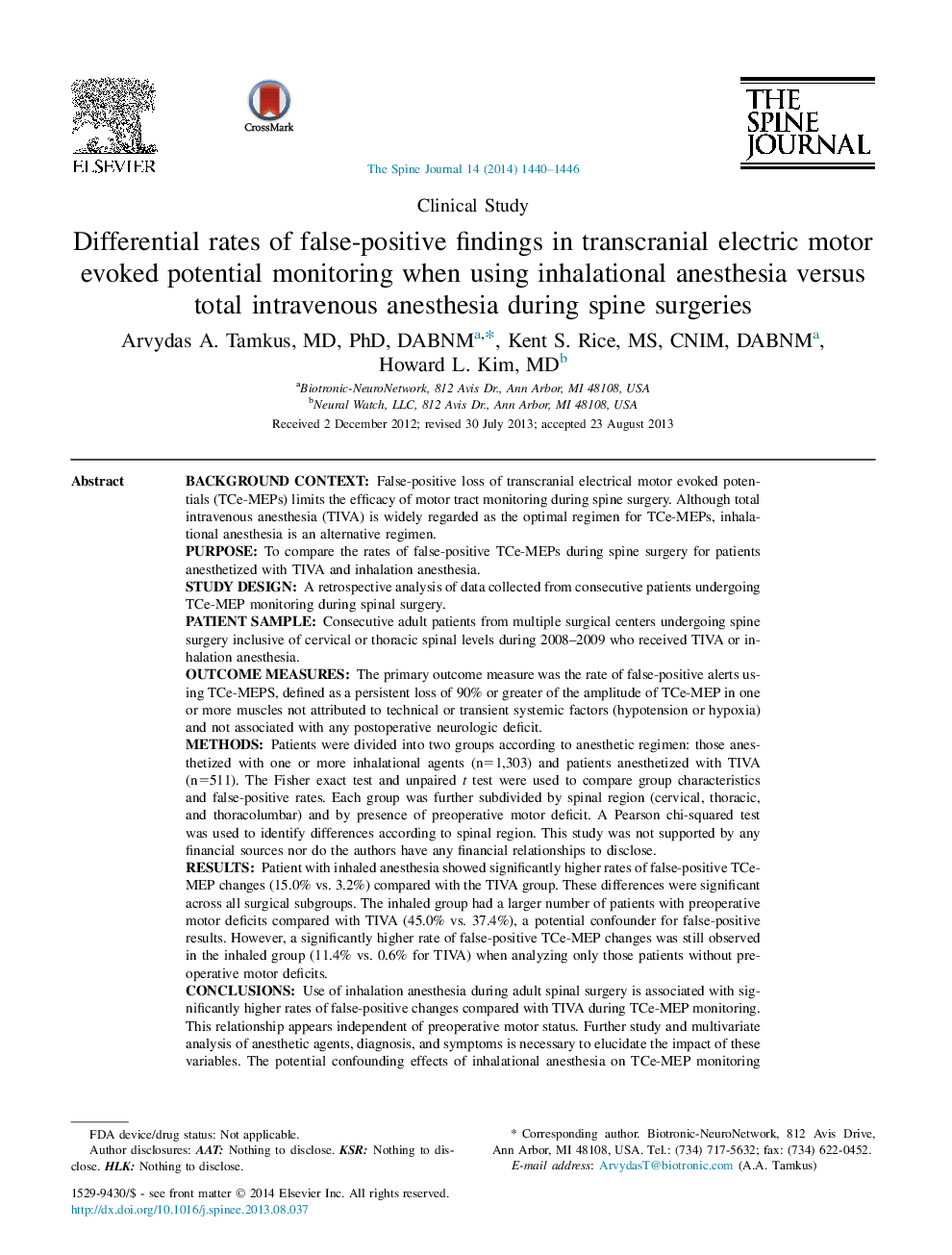| کد مقاله | کد نشریه | سال انتشار | مقاله انگلیسی | نسخه تمام متن |
|---|---|---|---|---|
| 6212181 | 1268575 | 2014 | 7 صفحه PDF | دانلود رایگان |
Background contextFalse-positive loss of transcranial electrical motor evoked potentials (TCe-MEPs) limits the efficacy of motor tract monitoring during spine surgery. Although total intravenous anesthesia (TIVA) is widely regarded as the optimal regimen for TCe-MEPs, inhalational anesthesia is an alternative regimen.PurposeTo compare the rates of false-positive TCe-MEPs during spine surgery for patients anesthetized with TIVA and inhalation anesthesia.Study designA retrospective analysis of data collected from consecutive patients undergoing TCe-MEP monitoring during spinal surgery.Patient sampleConsecutive adult patients from multiple surgical centers undergoing spine surgery inclusive of cervical or thoracic spinal levels during 2008-2009 who received TIVA or inhalation anesthesia.Outcome measuresThe primary outcome measure was the rate of false-positive alerts using TCe-MEPS, defined as a persistent loss of 90% or greater of the amplitude of TCe-MEP in one or more muscles not attributed to technical or transient systemic factors (hypotension or hypoxia) and not associated with any postoperative neurologic deficit.MethodsPatients were divided into two groups according to anesthetic regimen: those anesthetized with one or more inhalational agents (n=1,303) and patients anesthetized with TIVA (n=511). The Fisher exact test and unpaired t test were used to compare group characteristics and false-positive rates. Each group was further subdivided by spinal region (cervical, thoracic, and thoracolumbar) and by presence of preoperative motor deficit. A Pearson chi-squared test was used to identify differences according to spinal region. This study was not supported by any financial sources nor do the authors have any financial relationships to disclose.ResultsPatient with inhaled anesthesia showed significantly higher rates of false-positive TCe-MEP changes (15.0% vs. 3.2%) compared with the TIVA group. These differences were significant across all surgical subgroups. The inhaled group had a larger number of patients with preoperative motor deficits compared with TIVA (45.0% vs. 37.4%), a potential confounder for false-positive results. However, a significantly higher rate of false-positive TCe-MEP changes was still observed in the inhaled group (11.4% vs. 0.6% for TIVA) when analyzing only those patients without preoperative motor deficits.ConclusionsUse of inhalation anesthesia during adult spinal surgery is associated with significantly higher rates of false-positive changes compared with TIVA during TCe-MEP monitoring. This relationship appears independent of preoperative motor status. Further study and multivariate analysis of anesthetic agents, diagnosis, and symptoms is necessary to elucidate the impact of these variables. The potential confounding effects of inhalational anesthesia on TCe-MEP monitoring should be considered when determining anesthetic regimen.
Journal: The Spine Journal - Volume 14, Issue 8, 1 August 2014, Pages 1440-1446
